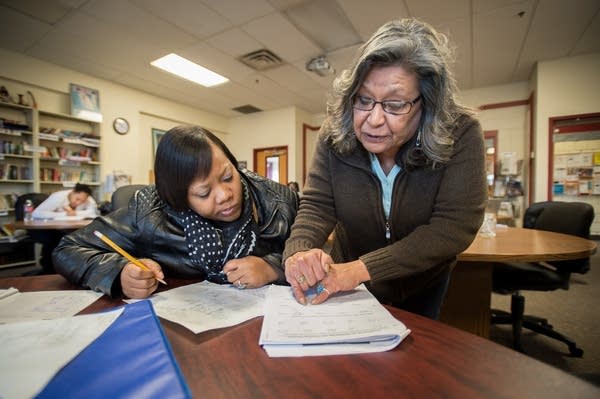High school dropouts try to get back in the game

Darlene Barbour, right, ABE/GED Program Coordinator at American Indian OIC in Minneapolis, helps Mykeisha Wright, 34, of Brooklyn Park, with math problems.
Caroline Yang for MPR News
Go Deeper.
Create an account or log in to save stories.
Like this?
Thanks for liking this story! We have added it to a list of your favorite stories.


